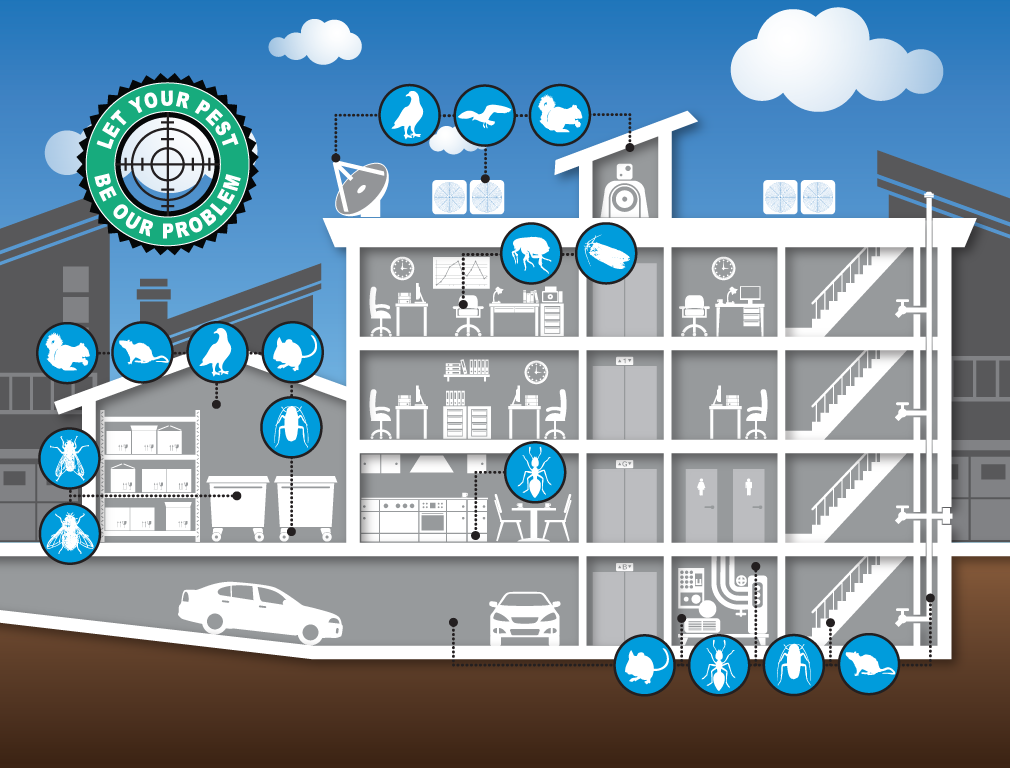Rodent-Proofing Your Attic: Vital Tips For Homeowners
Rodent-Proofing Your Attic: Vital Tips For Homeowners
Blog Article
Web Content By-Austin Enevoldsen
Picture your attic as a relaxing Airbnb for rodents, with insulation as fluffy as hotel cushions and circuitry a lot more tempting than room service. Currently, think of these unwanted guests throwing a wild celebration in your house while you're away. As a home owner, guaranteeing your attic room is rodent-proof is not practically satisfaction; it's about securing your home and liked ones. So, what easy steps can you take to safeguard your shelter from these furry trespassers?
Examine for Access Details
To begin rodent-proofing your attic, inspect for entry factors. Begin by very carefully checking out the outside of your home, trying to find any openings that rats could utilize to get to your attic. Check for voids around utility lines, vents, and pipes, in addition to any kind of cracks or openings in the structure or exterior siding. Make sure to pay close attention to locations where various building materials satisfy, as these are common access factors for rats.
In addition, inspect the roof for any harmed or missing tiles, along with any spaces around the sides where rodents can press with. Inside the attic room, look for indicators of existing rodent task such as droppings, chewed wires, or nesting products. Make use of a flashlight to extensively inspect dark edges and covert spaces.
Seal Cracks and Gaps
Check your attic room thoroughly for any kind of fractures and gaps that need to be sealed to avoid rodents from entering. Rats can press with even the smallest openings, so it's crucial to secure any type of potential entrance factors. Check around pipes, vents, cords, and where the walls fulfill the roof. Utilize a mix of steel wool and caulking to seal off these openings efficiently. Steel woollen is an exceptional deterrent as rodents can't eat with it. Guarantee that all spaces are tightly secured to refute access to undesirable parasites.
Do not ignore the relevance of sealing gaps around doors and windows too. rat infestation removal stripping or door moves to seal these areas properly. Evaluate the locations where energy lines get in the attic and seal them off making use of an ideal sealant. By putting in the time to seal all cracks and gaps in your attic, you develop an obstacle that rodents will discover difficult to breach. relevant resource site is key in rodent-proofing your attic, so be complete in your initiatives to seal off any potential entrance factors.
Get Rid Of Food Resources
Take proactive actions to eliminate or save all potential food resources in your attic room to deter rats from infesting the space. Rats are drawn in to food, so eliminating their food resources is crucial in keeping them out of your attic.
Below's what you can do:
1. ** Store food firmly **: Prevent leaving any food items in the attic room. Shop all food in impermeable containers made from metal or sturdy plastic to avoid rodents from accessing them.
2. ** Tidy up debris **: Get rid of any piles of particles, such as old newspapers, cardboard boxes, or wood scraps, that rats can utilize as nesting material or food sources. Keep the attic clutter-free to make it much less attractive to rats.
3. ** Dispose of rubbish properly **: If you utilize your attic room for storage space and have garbage or waste up there, make certain to deal with it on a regular basis and properly. Rotting garbage can attract rodents, so keep the attic tidy and free of any type of organic waste.
Conclusion
In conclusion, keep in mind that an ounce of prevention deserves an extra pound of cure when it comes to rodent-proofing your attic.
By making the effort to examine for access factors, seal fractures and spaces, and get rid of food resources, you can keep undesirable insects away.
Keep in mind, 'An ounce of prevention deserves a pound of treatment' - Benjamin Franklin.
Remain proactive and shield your home from rodent infestations.
